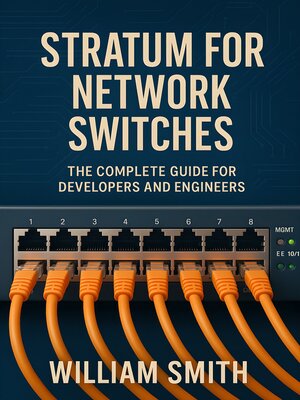Stratum for Network Switches
ebook ∣ The Complete Guide for Developers and Engineers
By William Smith

Sign up to save your library
With an OverDrive account, you can save your favorite libraries for at-a-glance information about availability. Find out more about OverDrive accounts.
Find this title in Libby, the library reading app by OverDrive.



Search for a digital library with this title
Title found at these libraries:
| Library Name | Distance |
|---|---|
| Loading... |
"Stratum for Network Switches"
Stratum for Network Switches provides an authoritative and comprehensive exploration of Stratum, the open-source network switch operating system advancing software-defined networking (SDN) and open networking principles. Beginning with a careful overview of Stratum's origins, architectural foundations, and community-driven development, the book frames Stratum's critical role in the evolution of modern data center, enterprise, and edge network infrastructure. Readers gain a thorough appreciation for Stratum's commitment to modularity, hardware abstraction, and collaborative innovation, along with its significance in the broader SDN ecosystem.
The book delves deeply into Stratum's architecture, component model, and extensibility, illuminating how abstracted platform layers and programmable dataplanes enable flexibility across a wide range of hardware targets. In-depth chapters guide professionals and technologists through practical aspects such as hardware adaptation, P4 integration, secure API exposure, and advanced management workflows using industry standards like gNMI and OpenConfig. With clear guidance on operationalizing Stratum—from secure, automated deployment to real-time telemetry, in-place upgrades, and immutable infrastructure—the reader is equipped to confidently deploy, manage, and scale programmable networks.
Beyond foundational concepts, Stratum for Network Switches addresses contemporary challenges and innovations, including resilience testing, DevOps integration, and sophisticated security and compliance strategies. The concluding chapters explore emerging horizons: mobile and 5G deployments, support for network slicing and multi-tenancy, and the intersection of Stratum with AI/ML-driven operations and next-generation orchestration frameworks. This text is essential for engineers, architects, and decision-makers seeking to harness Stratum's transformative capabilities in programmable networking.







